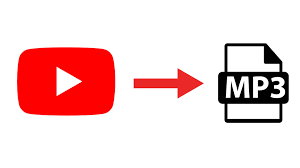Money makes the world go round; that’s a phrase we can’t deny. Especially after the COVID-19 pandemic, we’ve learned that there is so much uncertainty in how the job markets can fluctuate. Fittingly, these volatile times have sparked so much talk about financial security and how it’s so important regardless of age. And the first step toward securing your finances is to have an outline for your monetary usage.
Why having a Savings Plan is a must
Having a savings plan all mapped out allows you to visualize your financial goals in a much clearer format. It is more effective to achieve your financial goals compared to just winging it or doing the exact opposite by being Scrooge-like. This way, vacation plans, wedding budgets, and college funds won’t be something that’s hanging over your head.
Apart from that, a plan can come in handy during unexpected circumstances. Of course, we don’t want to imagine the unthinkable; but it is sometimes necessary to account for those potential mishaps because whether it’s a minor car accident or a major flood, you never know what’s in store. Therefore, having a savings plan can make a rainy day less gloomy.
Simple Tips to Start your Savings Plan
With countless aspects to account for, finances may seem like a tricky thing to get right. Well, maybe high-level financial plans may require some form of expertise but pinning down the basics of money matters are very plausible for anyone really. To help you get off your feet, we’ve put together a list of tips you can follow to create your very own savings plan.
1. Keep Track of your Expenditure

Ultimately, to create a personalized savings plan that is ideal for your lifestyle, you would have to take note of what your daily, monthly, and yearly expenses look like. Simple enough, all you have to do is keep track of every single payout transaction you make; gas, rent, food, and even the quick bites at the convenience store. While you could make a spreadsheet to fill up at the end of every day, CNBC has a list of helpful expense tracker apps to key in your spending on the go.
To make sure you’ve covered all the bases, checking your bank statements, e-wallet transactions, and all the stray crumpled receipts in your wallet would be a good idea. Some banks have an expense analysis within their app that you could rely on. However, this of course isn’t foolproof, seeing that transactions involving physical banknotes aren’t accounted for.
2. Review and Revise your Expenses
Now that you have a good grasp of where your money goes, you can start devising a strategy to save up. First and foremost, review each category within your expenditure. If multiple modes of transportation are burning a hole in your wallet, you could revise your lifestyle a little by looking into cheaper alternatives to commuting.
Apart from the necessary cash outflows like rent and utilities, a good chunk of it typically goes into the food category. So, you might want to consider choosing grocery shopping and homecooked meals over takeout. Plus, if you’re busy, you could cook in large portions and reheat your meals in a jiffy. Crockpots and microwaves are about to change your life here.
3. Set your Saving Goals
As you cut down on your expenses, the goal is to also reserve the excess money for savings. Experts say that about 10% to 20% is a good amount of income to set aside for savings. Draw a distinction between long-term and short-term saving goals. For instance, long-term savings can comprise tertiary education and retirement, whereas short-term goals can be anything ranging from the current gaming laptop to a dreamy beach vacation. With varying needs and durations, each saving goal would require a different approach.
With this in mind, you could explore your saving goals using the S.M.A.R.T goal-setting framework. This comprehensive guide views goals in terms of whether they are specific, measurable, achievable, realistic, and time-bound. With an outline as such, you’re well on your way to a solid savings plan. A quick tip, it is important to acknowledge that getting to spend your short-term savings accordingly can act as a motivating factor to keep the habit going.
4. Use the Right Financial Tools

Regardless of your saving goals, you should consider using financial tools to grow your savings. There are various options out there, so it is best to do an adequate amount of research before distributing your savings.
While you mainly create accounts for the interest rates, you should also pay attention to other important aspects such as the minimum balance, fees, level of risk, and the duration until you get the returns. Apart from the common savings account, you can also put your savings in money market accounts, a certificate of deposit, tax-advantaged accounts, and taxable investment accounts, just to name a few.
High-yield savings accounts such as deposit certificates are suitable for short-term goals and emergency funds. This is because it offers low risk at a higher interest rate than regular savings accounts. Plus, withdrawing the money is no hassle. On the other hand, long-term savings such as retirement funds would do well in a tax-advantaged or taxable investment account. These options will hold you accountable as withdrawing the money before retirement will cost you a penalty. On a side note, you could look into personal loans and credit cards to improve your credit score.
5. Automate your Saving Plan
Nowadays, banks have updated their app features to encourage savings. With just a few taps on your smartphone, you can add savings goals to your account. You can then adjust the settings to automatically divide portions of your income into the respective goals that you’ve created. This similar feature can also be applied to bills and other commitments you have lined up on a monthly basis. Like everything else, automating your saving plan is digitalized and very easily accessible.
Once you have a strategy in place, it is easy to keep checking your accounts and obsessing over your financial progress. On the contrary, try to find a healthy balance between being conscious of your savings and giving yourself time to grow your money. Starting to create a savings plan can be a tedious process, but it is undoubtedly worth it. It will give you peace of mind knowing that you’re financially set for the years to come.





